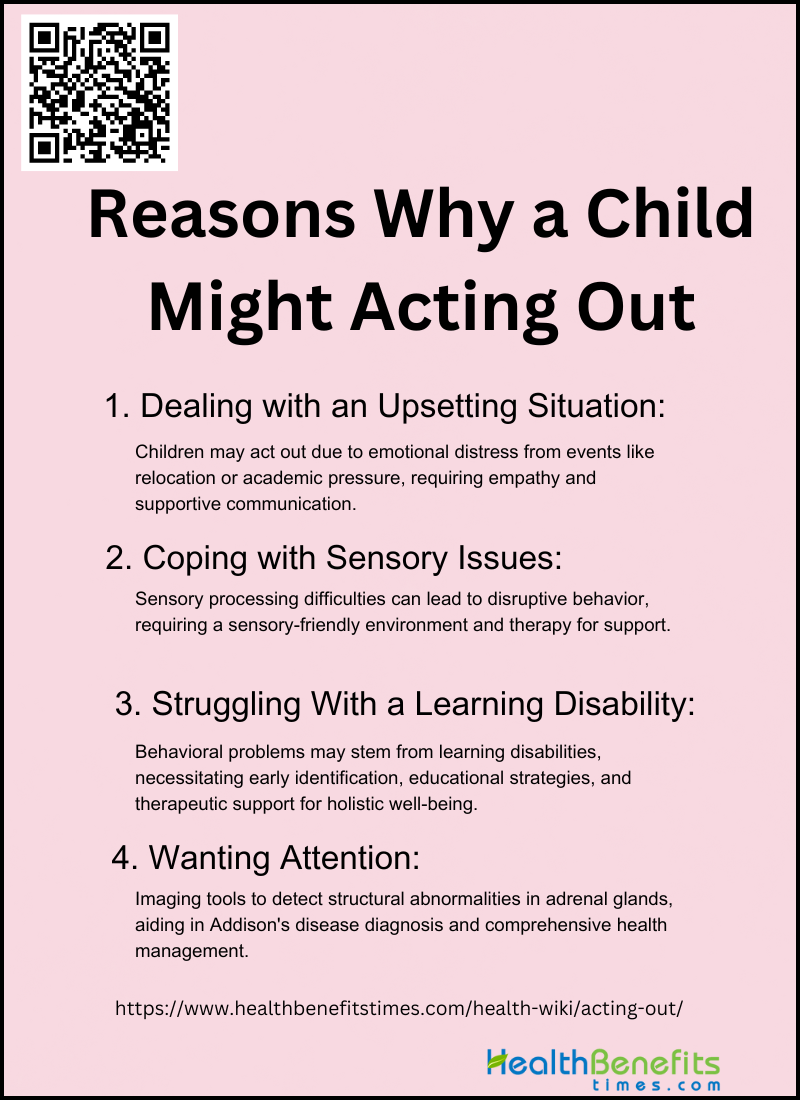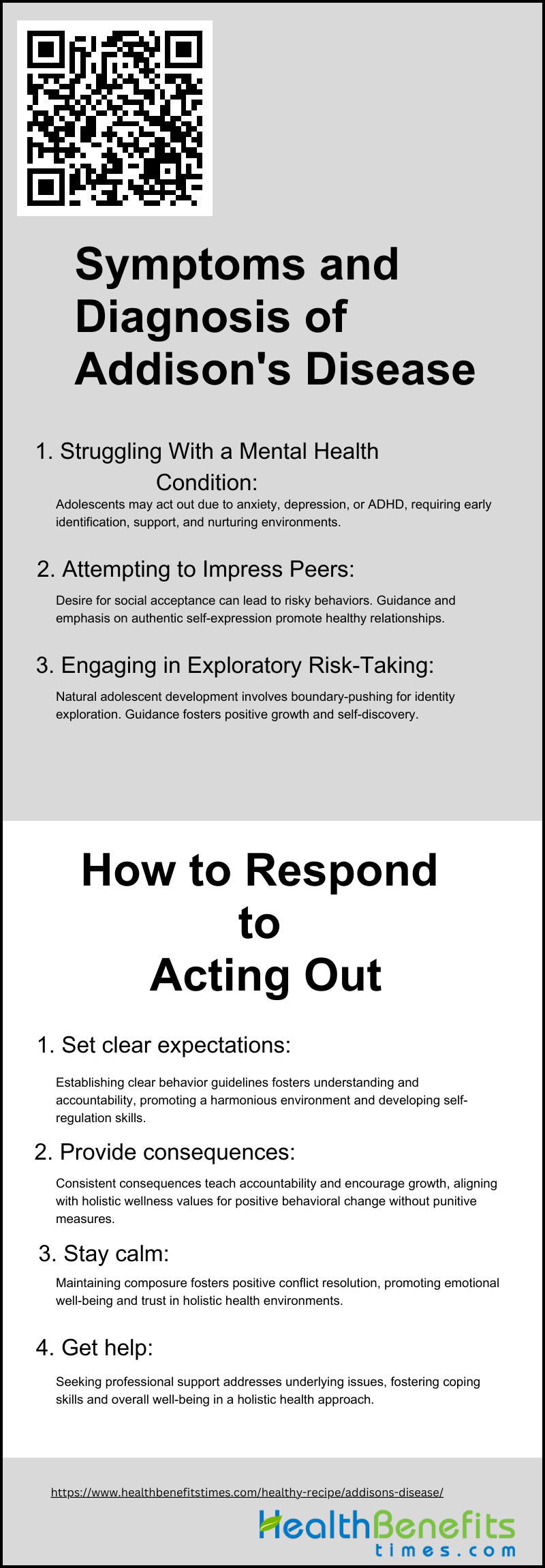Acting out refers to disruptive behaviors that often indicate repressed trauma and deviate from therapeutic norms, potentially due to unresolved countertransference. This shift from verbal to behavioral expression is believed to result from the brain’s unique storage of traumatic memories. These behaviors not only signify deep psychological distress but also are associated with increased substance abuse and aggression, particularly following traumatic events such as natural disasters. On a holistic health, fitness, and wellness website, it is important to recognize that acting out goes beyond mere misbehavior; it is a reflection of emotional turmoil and unmet psychological needs. Addressing the underlying causes of these behaviors is essential for healing, enabling individuals to develop healthier coping mechanisms and enhance their overall well-being. This approach acknowledges the intricate interplay between mental, emotional, physical, and social health, providing a more compassionate and integrated approach to wellness.
Reasons Why a Child Might Acting Out
Children display a variety of behaviors that may be confusing and difficult for parents and caregivers to manage. It is essential to comprehend the underlying causes of a child’s behavior in order to offer the necessary support and interventions. The following are some common triggers and psychological factors that can contribute to these behaviors.
1. Dealing with an Upsetting Situation
In the field of holistic health and wellness, it is recognized that children may experience emotional difficulties in response to distressing situations, which can manifest as disruptive behaviors. These behaviors, often referred to as “acting out,” are manifestations of emotions that children may not yet have the ability to verbalize, resulting from changes such as relocation, loss, or daily stressors like academic pressures or conflicts with peers. Caregivers must respond with empathy, recognizing that such behaviors signal a need for support. By promoting open communication and providing a safe environment for children to express their emotions, as well as teaching them healthy coping mechanisms, we can help them develop emotional resilience and personal growth. This approach not only addresses immediate behavioral issues but also equips children with the skills to navigate future challenges.
2. Coping with Sensory Issues
Children with Sensory Processing Disorder (SPD) may exhibit disruptive behavior due to difficulties in processing sensory information, such as bright lights, loud sounds, or certain textures. These sensory challenges can cause them to feel overwhelmed and act out, often as a way to seek help or avoid distressing stimuli. Recognizing these behaviors as indicators of sensory struggles is crucial for caregivers and healthcare professionals. To support these children, it is important to create a sensory-friendly environment, provide sensory integration therapy, and utilize tools like sensory-friendly clothing. Additionally, offering a quiet space for the child to relax, along with activities that help regulate sensory input, such as swinging or deep pressure exercises, can be beneficial. Parents and caregivers should observe the child’s reactions to sensory stimuli and collaborate with occupational therapists to develop personalized strategies that assist the child in navigating their sensory environment more effectively.
3. Struggling With a Learning Disability
Children who exhibit disruptive behavior may be indicating underlying difficulties related to learning disabilities, which involve challenges in language comprehension, listening, reasoning, and mathematical abilities. These difficulties can result in feelings of frustration and low self-esteem, often manifesting in behavioral problems. It is important to recognize that these behaviors are not deliberate acts of defiance but rather a cry for help. In the context of holistic health, fitness, and wellness, understanding the connection between learning disabilities and behavior is essential. Early identification and compassionate support can lead to the implementation of effective educational strategies, therapeutic interventions, and a nurturing environment. This approach not only assists children with learning disabilities, such as dyslexia, dyscalculia, and dysgraphia, in staying focused and communicating effectively, but also promotes their overall well-being, ensuring they feel supported and valued in their educational journey.
4. Wanting Attention
In the realm of holistic health, fitness, and wellness, it is recognized that a child’s need for attention is a critical aspect of their emotional well-being, which directly influences their overall health. Children may exhibit attention-seeking behaviors as a way to seek connection, often through actions such as crying or tantrums, which may be misinterpreted as simple misbehavior. These behaviors indicate a deeper need for emotional engagement and positive interaction with their caregivers. By understanding this, parents and educators can effectively address such behaviors by providing consistent, high-quality attention and creating a nurturing environment through patience, active listening, and open communication. This approach not only helps to reduce negative behaviors but also promotes healthier emotional development and strengthens family bonds, ultimately leading to a more balanced and harmonious upbringing.
Reasons Tweens and Teens Acting Out
During adolescence, individuals between the ages of 10 and 19 often experience a range of emotions and situations that may lead to disruptive behavior. It is important to understand the underlying causes of this behavior in order to offer appropriate support and guidance. Several factors, including physical, emotional, and environmental changes, can contribute to why tweens and teens may act out.
1. Struggling With a Mental Health Condition
During the transitional period of adolescence, mental health disorders such as anxiety, depression, and ADHD can have a significant impact on behavior, often being mistaken for mere misbehavior. These difficulties, exacerbated by hormonal changes and brain maturation, may result in disruptive actions as a plea for assistance. It is crucial for individuals in supportive roles, such as parents and teachers, to identify these challenges early on. Creating a nurturing environment that includes comprehensive mental health resources, therapy, and open communication is essential. Through empathy and appropriate intervention, we can guide young individuals towards healthier coping mechanisms and increased resilience, ultimately improving their emotional regulation and overall well-being.
2. Attempting to Impress Peers
During adolescence, the desire to impress peers and the struggle for social acceptance can lead preadolescents and adolescents to engage in behaviors such as truancy, substance experimentation, or theft. These disruptive behaviors are often a cry for attention and a manifestation of emotional distress that requires adult guidance and support. As young individuals navigate their social standing, they may adopt risky behaviors or conform to trends that do not align with their authentic selves or family values. It is crucial for caregivers and educators to cultivate an environment that encourages genuine self-expression and emphasizes that genuine friendships are built on mutual respect and shared values, rather than the fleeting pursuit of admiration from others. By promoting a comprehensive approach to health education that addresses emotional and social well-being, we can guide our youth towards healthy peer relationships that contribute to their overall wellness.
3. Engaging in Exploratory Risk-Taking
During the process of adolescent development, individuals in the tween and teen age groups often participate in exploratory risk-taking behaviors, which are considered natural and necessary for their maturation. This stage, characterized by changes in the brain and hormones, motivates them to search for their identity and independence by pushing boundaries, sometimes under the influence of peer pressure and the desire for social acceptance. While these behaviors, including those exhibited on social media platforms such as TikTok, may raise concerns for parents and caregivers, it is important to understand that not all acts of defiance are harmful. Instead, they present opportunities for personal growth and self-discovery. Providing guidance and creating a supportive environment are crucial in ensuring that these experiences have a positive impact on their overall health and well-being, enabling them to navigate the challenges of adolescence safely.
How to Respond to Acting Out
When faced with acting out behavior, it’s crucial to approach the situation with a blend of compassion and structure. Understanding the root causes and implementing effective strategies are essential for addressing these behaviors in a constructive manner. Here are some techniques to assist in guiding your responses in a manner that promotes overall health and well-being.
1. Set clear expectations
In managing behaviors such as acting out, it is crucial to establish clear expectations to promote an environment of understanding, respect, and well-being. Communicating these expectations in a clear and compassionate manner provides individuals with a framework for behavior that promotes personal and group harmony, increases feelings of security, and encourages positive decision-making. This not only fosters a stable and positive atmosphere but also helps develop self-regulation skills that are essential for emotional and mental resilience. By outlining expected actions, attitudes, and participation, we promote a collaborative and peaceful approach to wellness, empowering individuals to feel valued and accountable for their behavior, which is essential for their overall health and emotional well-being.
2. Provide consequences
In managing behaviors that challenge the norms of health and fitness, it is vital to employ a system of clear, consistent, and graduated consequences that reflect a holistic health philosophy. This approach prioritizes understanding, compassion, and the connection between mind and body, aiming to teach accountability and encourage personal growth. By applying fair and constructive consequences immediately after undesirable actions, individuals, especially children, can learn the relationship between their behavior and its effects. This not only promotes a positive environment but also supports the individual’s overall well-being—physically, mentally, and emotionally—by motivating them to develop healthier habits and fostering self-awareness without resorting to punitive measures. Such a strategy is rooted in the belief that discipline should be an opportunity for learning and self-improvement, aligning with the core values of holistic health and wellness.
3. Stay calm
In the realm of holistic health, fitness, and wellness, maintaining a calm and serene demeanor is crucial for de-escalating tense situations and creating a positive environment. Whether dealing with a child’s outburst or a colleague’s stress, staying composed allows for thoughtful assessment and rational decision-making. This not only sets a positive example for conflict management but also promotes emotional and overall well-being. Deep breaths, a soft tone, and a non-threatening posture are simple yet powerful tools that demonstrate patience and understanding, facilitating effective communication and resolution. Embracing this approach fosters a sense of safety and trust, which is essential for a holistic approach to health and wellness.
4. Get help
In the pursuit of holistic health and wellness, it is essential to address acting out behaviors by seeking professional help. This step is fundamental in understanding the complex emotions and behaviors involved, and it may point to deeper issues that require attention. Therapists, counselors, and support groups are equipped to offer strategies and tools that help uncover the root causes and promote the development of effective coping mechanisms. A supportive environment that fosters open communication and self-care is also crucial to this process. Consulting with mental health professionals can lead to personalized interventions that not only manage immediate behaviors but also contribute to overall well-being. Remember, asking for help reflects strength and is a proactive step towards a balanced and healthier life.


